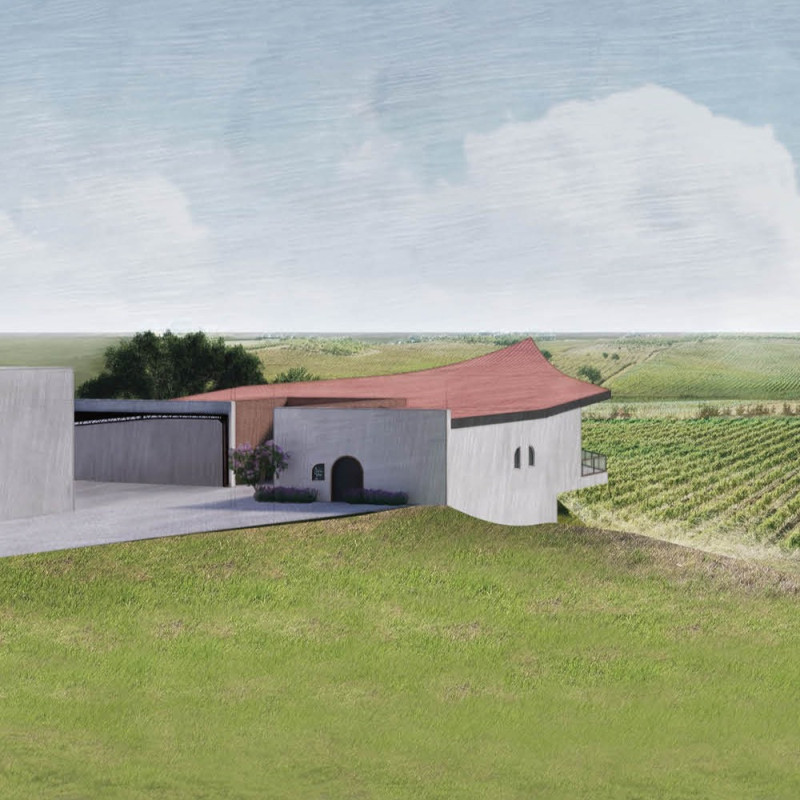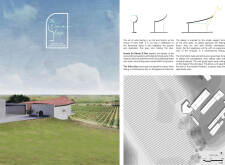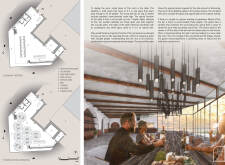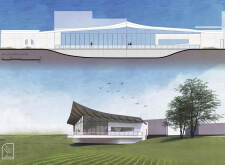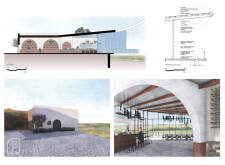5 key facts about this project
Architecturally, "The Wine Glass" embodies a clear concept drawn from the form of a wine glass itself, which informs both the overall silhouette and the specific details of the structure. The building's exterior features have been meticulously designed to mimic the flowing contours of a wine glass, creating a unique visual identity that distinguishes it within the region. This approach fosters a strong connection between the built environment and the vineyards that surround it, encouraging visitors to engage with the landscape while enhancing their wine tasting experience.
Functionally, this project serves multiple roles. It is a venue for wine tasting, an educational space for learning about viticulture, and a community gathering place that encourages social interactions among visitors. The expansive interior has been designed to accommodate both large groups and intimate gatherings, allowing flexibility in how the space is used. A large central table made of beautifully crafted wood acts as the focal point, promoting interaction and conversation, which are crucial to the wine tasting experience. The arrangement of the space encourages movement and engagement with the surroundings, reinforcing the importance of communal experiences in wine culture.
Key architectural details within "The Wine Glass" contribute significantly to its overall functionality and aesthetic. The use of abundant glass in the façade invites natural light into the interior, enhancing the atmosphere and allowing breathtaking views of the vineyards outside. This connection to the landscape not only elevates the sensory experience of the visitors but also serves to ground the architecture in its context, emphasizing the relationship between the building and the natural environment.
The choice of materials is another critical aspect of the design. The project incorporates elegant concrete for structural integrity while also utilizing wood to bring warmth to the interior. The large wooden table crafted from high-quality timber is a particular highlight, serving both as a functional element and a design statement. Additionally, brickwork is strategically used in select areas to honor local building practices, creating a balance between modern design and traditional craftsmanship.
One of the unique design approaches of this project is its commitment to sustainability and its integration with the local environment. The building’s orientation and form are carefully considered to maximize energy efficiency and minimize environmental impact, aligning with contemporary architectural values that prioritize sustainability. The architectural design not only reflects the beauty of the wine glass form but does so in a way that is respectful of the environment and the site’s cultural heritage.
Exploring the architectural plans, sections, and designs of "The Wine Glass" further reveals the depth of thought and creativity behind the project. Each element has been purposefully designed to enhance both the functionality and the aesthetics of the space. Readers interested in architectural ideas and design will find the detailed presentation of this project to be a valuable resource for understanding how thoughtful architecture can create meaningful places for people to gather and share experiences. Throughout the project, the commitment to enhancing the wine tasting journey is evident, making it a notable example of contemporary architecture that harmonizes with its setting.


